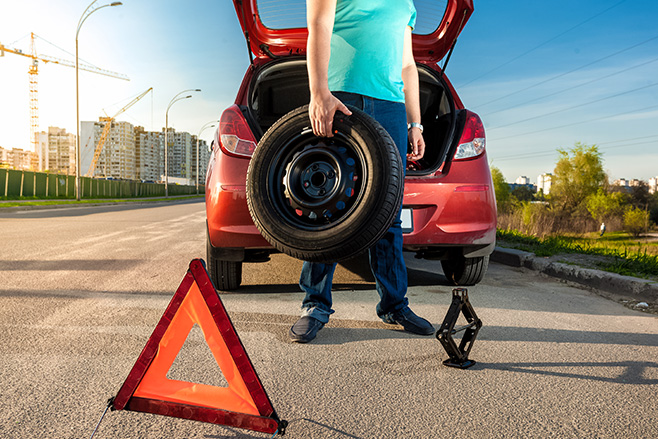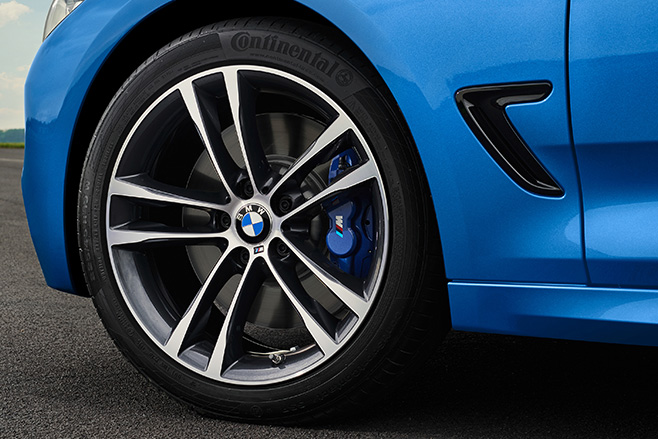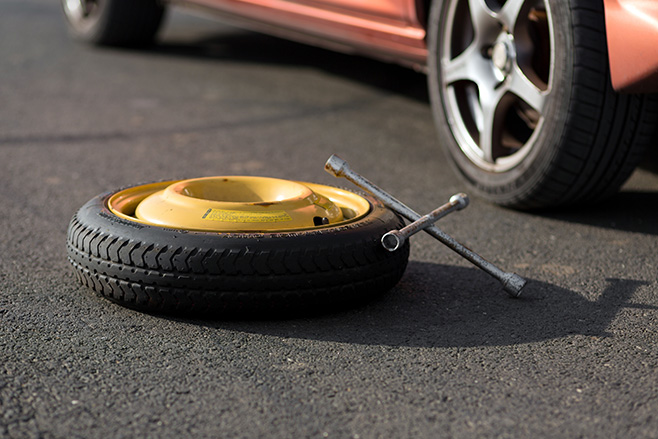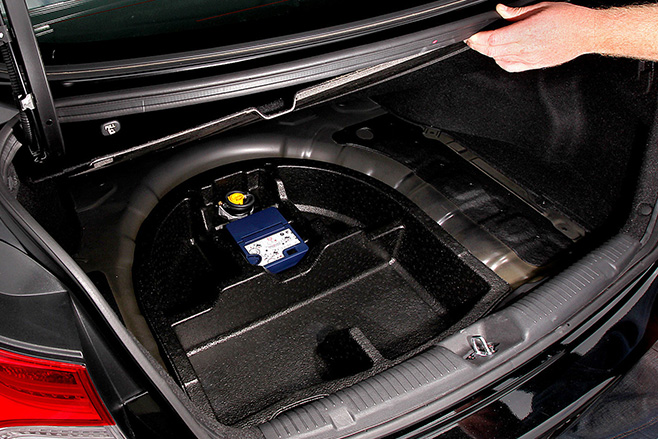
Nothing can flatten your spirits and deflate your mood quite like a flat car tyre, though this feeling is often followed by the vague sense of panic about the state of your spare.
The spare tyre is out of sight and out of mind until we get a puncture, then it becomes our everything, so it’s important to have the right spare tyre for your circumstances – and know how to use it.
FULL-SIZE SPARE
In a big country like Australia, with many motorists undertaking long commutes and car trips, the full-size spare is the best and safest option. While some car companies have recognised this and fit full-size spares as standard or as a no-cost option, many still list it as a cost option – or don’t offer one at all.

This is something to consider when purchasing your next car: if you travel to more remote locations far from tyre centres or garages or the fitted tyres are hard to source, it’s probably prudent to carry a full-size spare.
The knowledge that you have a failsafe offers great peace of mind. Your car can continue to be driven without compromising handling, acceleration or braking, and you have time to source a new tyre at a good price.
The main drawback of a full-size spare is a loss of boot space, particularly if the car normally comes with smaller space-saver spare. Optioning a full-size spare to some vehicles can even leave you with a bulbous protrusion in the boot floor, so be sure to check its fitment at the dealer and weigh up your options. You’ll also need to know how to change it yourself, or be forced to wait for roadside assistance or a kindly fellow motorist to help you.
Only run-flat tyres are more convenient at the time of the puncture as they do not require changing on the spot, though they also have disadvantages…
RUN-FLAT TYRES
As the name suggests, a run-flat tyre allows the car to continue at a reduced speed once it is punctured without the need to immediately change it. The harder, reinforced sidewalls of the run-flat tyre keep enough of the tyre rolling and in contact with the road at speeds up to 80km/h even with a puncture, so the driver can reach the nearest garage without stopping or getting stranded. Particularly with a slow leak it may be difficult to even feel the difference, hence why all run-flat equipped cars are also fitted with tyre pressure monitors to alert the driver.

Motorists are tragically killed every year while trying to change a tyre by the side of the road, even if they are pulled well over to the shoulder. This factor is removed by the ability to keep moving.
There are some downsides; if you are unfortunate enough to have a major rip in the sidewall, the tyre will be too compromised to continue and leave you stranded by the roadside, and run-flat equipped cars have no secondary spare. However, this is a rare occurrence.
Many tyre centres have limited supply of run-flat tyres, and unless your size is popular and in demand, you may need to order and wait. While you do have about 80 kilometres of travel on a deflated run-flat up your sleeve, your speed and ultimately your safety are still limited. Plus, if you do drive on a deflated run-flat, it is not repairable so you will need to replace the tyre.
And finally, while the technology has made boundless improvements in the 20-odd years since their introduction (by BMW), a run-flat will still not offer the feel and precision of a dedicated sports tyre with flexible sidewalls – hence why you will not find run-flats on the top sports models or large-alloyed performance variants.
SPACE-SAVER SPARE
Also called a Temporary Use Spare (TUST), this is a smaller and lighter alternative to a full-size spare. They are usually about half the width of a normal wheel and tyre, and suit vehicles with limited boot space or performance cars where weight saving is a priority.

It is still better than having no spare at all, allowing a quick change and then getting you safely to a garage: albeit at a reduced speed.
As it is essentially half a tyre, it offers greatly reduced grip and handling and most are limited an 80km/h top speed. Don’t be tempted to leave it bolted up for long periods either– if driven on for more than 100km, it may also need replacing along with the flat tyre.
There is also a second safety issue – if you are unlucky enough to get a puncture on the front wheel of a front-wheel-drive car, the space saver should be swapped with the rear tyre, as the wheels that steer
In a rear-drive car, it’s a case of compromising steering at the front or drive at the rear, and in most cases a single jack will not lift the car safely or adequately to allow a double tyre change anyway. This means an extra-cautious journey straight to the nearest garage.
PUNCTURE REPAIR KIT
This kit, otherwise known as the “Can of Goo”, is made up of an air compressor and a can of tyre sealant.

These kits are often found in vehicles that have small boots, performance cars or vehicles equipped with overly large alloys and specific tyre types.
Being the size of a shoebox, they are the ultimate space saver. However, the downsides of this kit are obvious: it’s fiddly and time consuming to use, and completely useless for large punctures – don’t expect any amount of goop to solve a blown-out sidewall.
The sealant is fed into the tyre via the inflation nozzle, coating the inside of the tyre and (hopefully) plugging the puncture. The car may need to be rolled a few metres back and forward after administering the sealant so the goo can reach the puncture. Then the compressor is connected, which is powered by your car battery or cigarette lighter port and restores the tyre’s air pressure.
Imagine doing all that on a rainy night by the highway… It is often better to simply purchase a can of goo with both the product and the means for inflation in one and carry it in the boot as well. Most will cost around $20 from any auto store.
Also, once the goo is in the tyre, it likely won’t be able to be repaired – garages hate trying to repair even mildly damaged tyres full of sticky goop – so a new tyre will need to be fitted. And fast.
Of all the spare alternatives, the puncture repair kit is the least effective and carries the highest likelihood of your vehicle needing an expensive tow.
Hopefully you will never need it.



